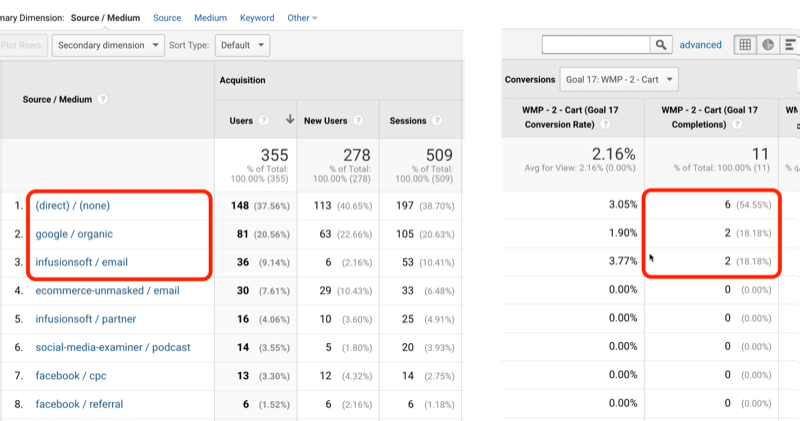Discover What Data Is Google Analytics Goals Unable to Track
Wiki Article
Discover the Limitations of Google Analytics Goals: Introducing the Data Kind That Remain Untrackable
As services progressively depend on data-driven decision-making, comprehending the limitations of devices like Google Analytics comes to be critical. While Google Analytics Goals deal important insights into customer communications, there exist information kinds that elude tracking, presenting challenges to an extensive understanding of user habits.Insufficient User Trip Tracking
Incomplete user trip tracking within Google Analytics can impede the capacity to precisely examine user habits. When the customer journey is not completely tracked, there are gaps in the information that protect against an extensive understanding of exactly how customers connect with a website. This absence of insight can result in missed out on opportunities for optimization and renovations to the individual experience.One typical concern with incomplete user trip tracking is the failure to see the full course that customers take in the past finishing an objective or leaving the site. Without this information, it is testing to identify where individuals may be coming across challenges or friction factors that prevent them from transforming. In addition, incomplete monitoring can cover the effect of specific marketing initiatives or website modifications on user actions.
To resolve this constraint, it is essential to establish up proper monitoring systems within Google Analytics to capture the whole user trip. This may include establishing occasion monitoring, objective funnels, or making use of devices like Google Tag Manager to ensure that no vital communications go unrecorded. By getting a thorough sight of the user journey, website owners can make more educated choices to improve user engagement and drive conversions.
Acknowledgment Obstacles
Browsing through acknowledgment challenges in Google Analytics needs a thorough understanding of just how different touchpoints add to the general conversion process. Attribution challenges arise from the complexity of modern client trips, where users engage with multiple channels prior to converting. Google Analytics provides different attribution designs like initial touch, last touch, and straight, each supplying a different viewpoint on just how credit report is appointed to touchpoints along the conversion path. These versions might not constantly precisely mirror the true effect of each touchpoint on the conversion.One usual attribution obstacle is the trouble in attributing conversions to the proper resource, specifically in cases where customers interact with several channels prior to transforming. In addition, cross-device monitoring presents an additional acknowledgment obstacle, as customers commonly switch between gadgets throughout their trip, making it testing to track their interactions perfectly.
Offline Conversions
Given the obstacles related to associating conversions accurately in online networks, the measurement of offline conversions offers a considerable possibility for online marketers seeking a much more extensive understanding of their clients' trip. Offline conversions describe actions that clients absorb the physical globe, such as making acquisitions in brick-and-mortar stores or over the phone, attending events, or involving with printed products - what data is google analytics goals unable to track. These conversions are essential for services that operate both online and offline, as they provide important understandings right into the efficiency of advertising and marketing projects across different touchpointsTracking offline conversions traditionally posed a significant obstacle for marketing experts, as it was testing to link these actions back to more tips here specific on the internet interactions accurately. With improvements in modern technology, such as the combination of CRM systems, special identifiers, and coupon codes, companies can currently connect the void between online and offline information to get a much more all natural view of client behavior. By successfully measuring offline conversions, online marketers can enhance their methods, allot sources a lot more efficiently, and inevitably enhance the total consumer experience.
Cross-Device Tracking
Cross-device monitoring plays a crucial role in understanding the interconnected nature of customers' electronic interactions throughout multiple devices. In today's omnichannel globe, where individuals perfectly switch over between mobile phones, tablets, and desktop computers, tracking their actions across these tools is necessary for marketing experts to gain a detailed sight of their client trip.
Moreover, personal privacy problems and guidelines my latest blog post such as GDPR and CCPA have even more complex cross-device tracking. With users requiring more control over their information and raised constraints on monitoring innovations, marketers should locate privacy-compliant and innovative means to connect individual interactions across tools.
Dynamic Web Content Involvement
Comprehending individual interaction with dynamic material is critical in optimizing electronic marketing strategies for boosted audience interaction. Dynamic content describes site elements that transform based upon individual habits, choices, or other variables, offering a tailored experience. Tracking user communications with vibrant material presents difficulties for traditional analytics devices like Google Analytics.While Google Analytics can track fundamental communications like clicks and page views, it might battle to capture more nuanced engagements within dynamic material. what data is google analytics goals unable to track. Metrics such as time invested in details vibrant components, hover actions, or interactions within pop-ups are typically not quickly measurable using common tracking techniques. click here to read This constraint prevents online marketers' ability to completely realize how users are involving with vibrant content and tailor their approaches as necessary

Final Thought
To conclude, Google Analytics goals have limitations in tracking incomplete customer trips, connecting conversions precisely, catching offline conversions, tracking cross-device communications, and measuring dynamic web content engagement. These restraints highlight the value of discovering added monitoring methods and devices to get a more extensive understanding of individual actions and conversions past what Google Analytics can supply.While Google Analytics Goals deal beneficial insights right into individual communications, there exist data kinds that thwart monitoring, posing difficulties to an extensive understanding of user behavior.Incomplete user trip monitoring within Google Analytics can impede the capability to properly analyze user actions. When the individual trip is not fully tracked, there are voids in the data that stop an extensive understanding of exactly how users interact with a website.One usual issue with incomplete customer trip monitoring is the lack of ability to see the full path that individuals take previously completing an objective or leaving the site. By obtaining an extensive sight of the customer journey, internet site owners can make even more informed choices to boost individual interaction and drive conversions.
Report this wiki page